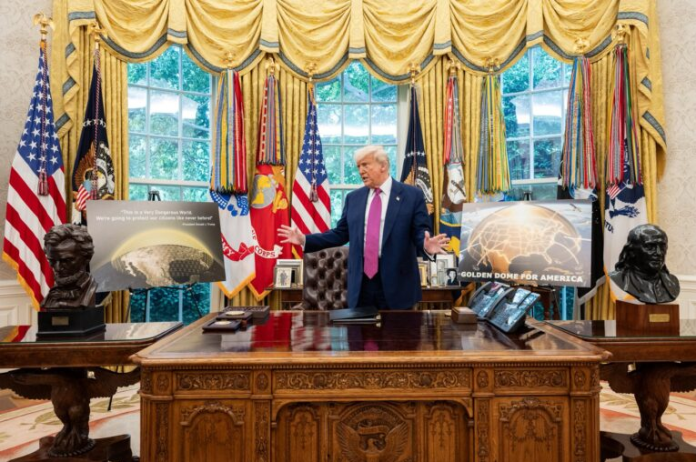U.S. President Donald Trump has unveiled an ambitious missile defense initiative known as the Golden Dome, a project aimed at shielding the United States from aerial threats, including ballistic, cruise, and hypersonic missiles. With an estimated cost of $175 billion, the plan seeks to integrate land, sea, and space-based technologies to create a multi-layered defense system2. While Trump has touted the project as a game-changer in national security, critics argue that it may be too costly and technologically unrealistic.
The Golden Dome plan echoes Ronald Reagan’s Strategic Defense Initiative (SDI), famously dubbed “Star Wars,” which aimed to develop space-based missile defense systems in the 1980s. Trump has positioned his plan as a continuation of Reagan’s vision, claiming that advancements in technology now make such a system feasible. The initiative would rely on hundreds of satellites to detect and intercept enemy missiles before they reach U.S. soil.
Trump’s administration has earmarked $25 billion in initial funding for the project, but experts warn that the final cost could far exceed the projected $175 billion. The Congressional Budget Office (CBO) has estimated that space-based missile defense alone could cost over $500 billion in the next two decades. Given the economic challenges facing the U.S., including inflation and national debt, many question whether such an investment is financially responsible.
While Trump has promised that the Golden Dome will be operational by 2029, military analysts remain skeptical. The system would need to track and intercept missiles at various stages, including before launch, mid-flight, and final approach. This requires highly advanced sensors, AI-driven tracking systems, and rapid-response interceptors, many of which are still in development. Additionally, critics argue that Russia and China could respond by accelerating their own missile programs, potentially triggering a new arms race.
The Golden Dome plan has already sparked international concerns, with China and Russia warning that it could destabilize global security. Some U.S. lawmakers, particularly Democrats, have raised concerns about transparency and the selection process for key contractors, with companies like SpaceX and Lockheed Martin expected to play a major role. Meanwhile, Canada has expressed interest in joining the initiative, signaling potential international collaboration.
Trump’s Golden Dome plan represents a bold vision for U.S. defense, but its high costs, technological hurdles, and geopolitical risks make it a controversial proposal. While supporters argue that missile defense is essential in an era of growing threats, skeptics warn that the project could become another expensive experiment with uncertain results. As the debate unfolds, the U.S. must weigh the benefits of enhanced security against the financial and strategic risks of pursuing such an ambitious defense system.

















